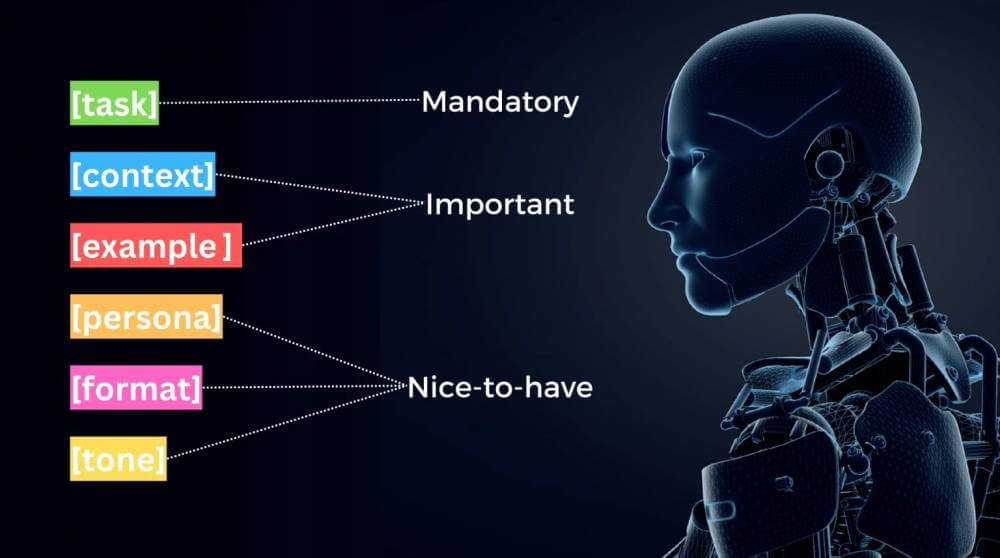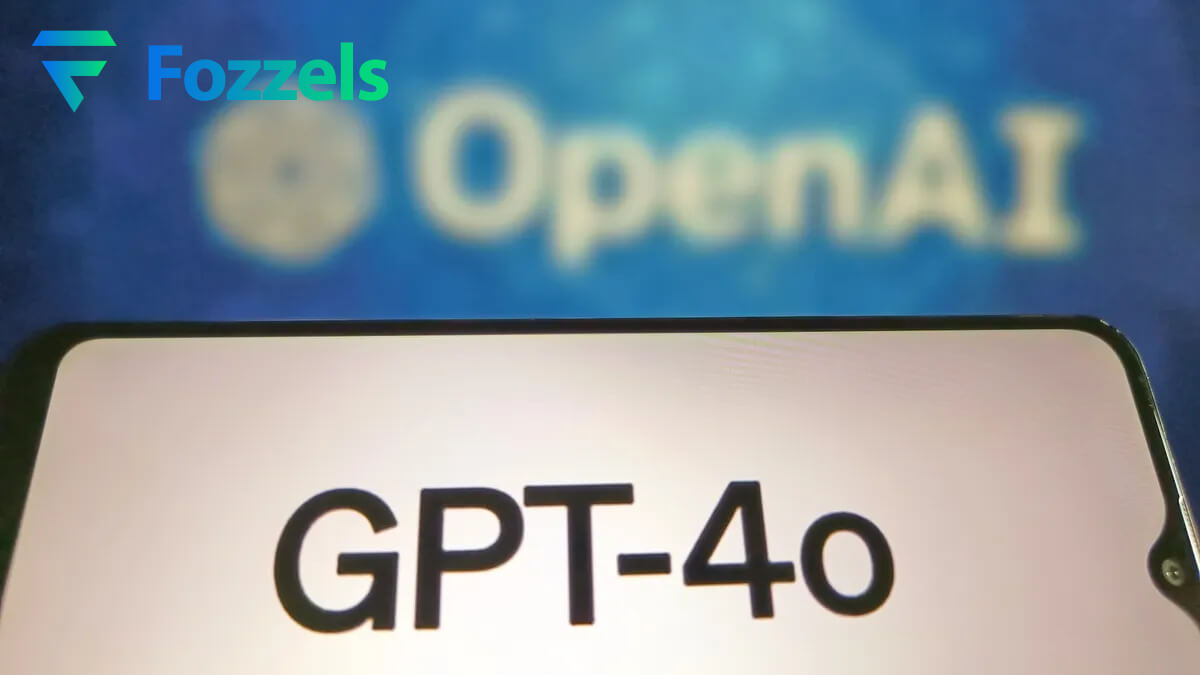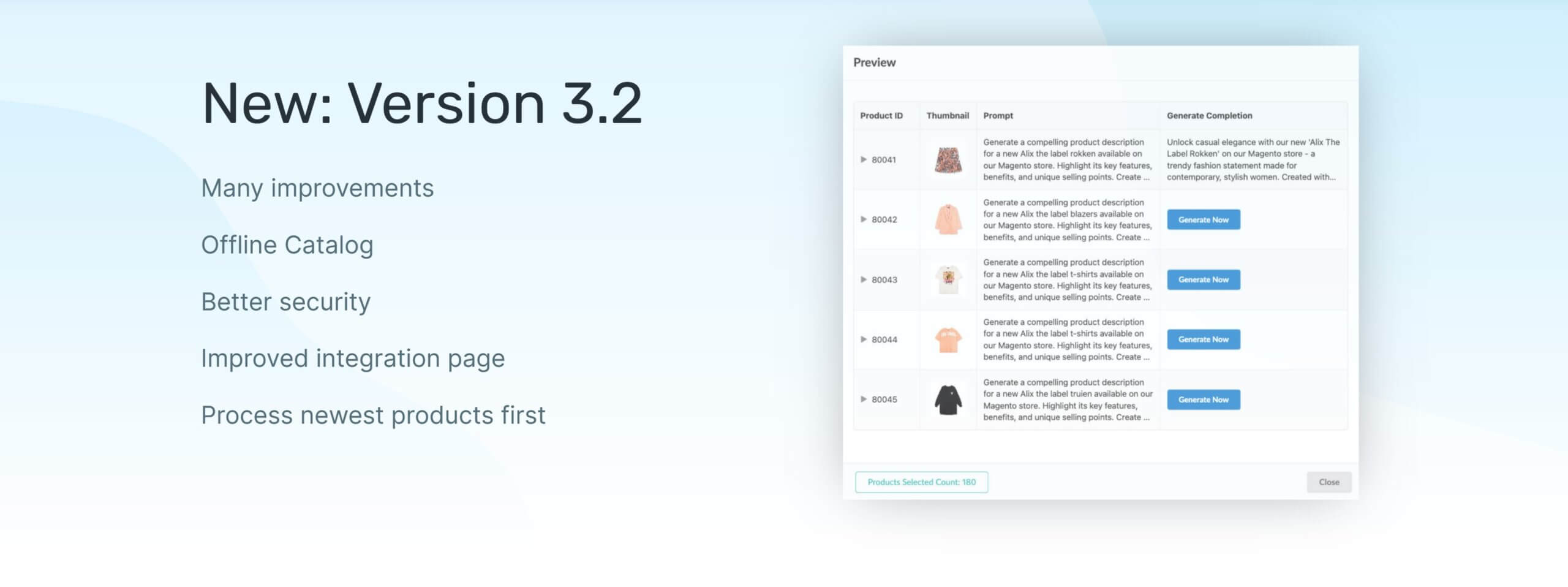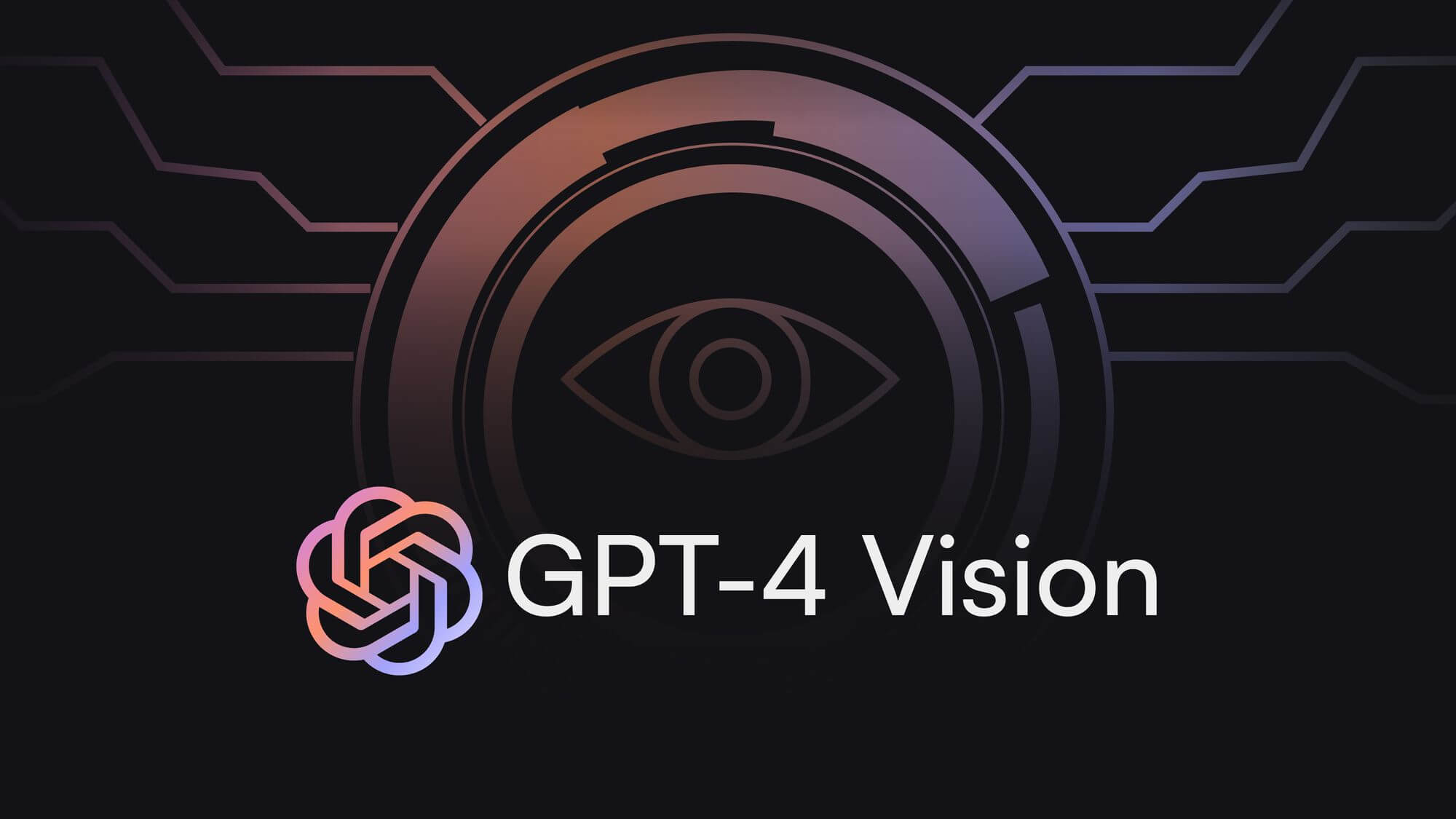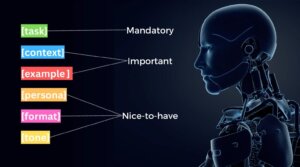 Are you struggling to get the most out of ChatGPT and text creation? You are not alone. In this blog post we will help you to find some structure and a good way to get the best results. Whether you’re a tech enthusiast or a professional, understanding how to craft the perfect prompt is crucial.
Are you struggling to get the most out of ChatGPT and text creation? You are not alone. In this blog post we will help you to find some structure and a good way to get the best results. Whether you’re a tech enthusiast or a professional, understanding how to craft the perfect prompt is crucial.
We’ll explore the six building blocks that constitute an effective prompt, providing you with the tools to consistently generate high-quality outputs.
The Six Building Blocks of a Good Prompt
To create a good prompt, you must first understand the significance of each of its components. Here’s a breakdown of the six building blocks:
- Task
- Context
- Examples
- Persona
- Format
- Tone
1. Task
The task is where it all begins. Always start your task sentence with an action verb like “generate,” “give,” “write,” or “analyze.”
Clearly define your end goal, whether it’s a simple task like generating a three-month training program or a more complex one involving multiple steps.
Our custumers often use Fozzels for generating product description texts. In that case, the task could be “Write a product description to sell the following product: …”.
2. Context
Context is a crucial component but should be used judiciously. Ask yourself these three key questions:
- What’s the user’s background?
- What does success look like?
- What environment are they in?
Providing just enough context to constrain possibilities is good for productive interactions.
3. Examples
Including examples within your prompt greatly enhances the output quality.
Whether it’s rewriting a resume bullet point, preparing for an interview, or crafting a job description, exemples help guide the model and yield better results.
4. Persona
Consider who you want ChatGPT embody. Visualize the ideal persona that aligns with the task at hand.
It could be a physical therapist, a recruiter, or even a fictional character like Batman, depending on your needs.
Often, for online stores, it could be the owner, or the sales person normally in the shop.
5. Format
Visualize the end result’s format.
Whether it’s a table, email, bullet points, or paragraphs, be clear about how you want the information presented.
This visualization helps communicate your expectations effectively.
6. Tone
Tone sets the mood of the response. Specify whether you want a casual or formal tone, enthusiasm, or a confident yet friendly voice.
Communicating the desired tone ensures your prompt’s output matches your intentions.
There are some components that are more important than others, and it all depends on the prompt and task you are working on.
Conclusion
Remember that prompt engineering is a dynamic field, and continuous learning and experimentation are key to mastering this high-leverage skill in the AI landscape.
The more detailed, and the more components, the better the results can be, but it doesn’t mean you need all of them every time.
You can follow Fozzels.com on Twitter/X for more updates including how to use AI to supercharge your business, and AI solutions.

